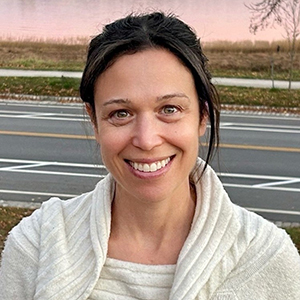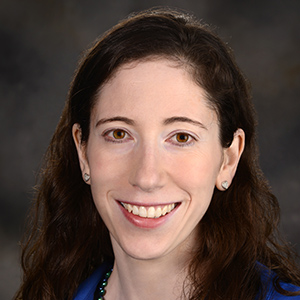The second annual Endocrine Disrupting Chemicals-North Carolina (EDC-NC) Society scientific meeting attracted over 170 registrants for the April 5 event at NIEHS. “More people signed up to present a poster than we had room for,” said Jerry Heindel, Ph.D., a former NIEHS program officer who retired in 2016. “This meeting is like the field of dreams — ‘if you build it, they will come’ — and here you are,” he told the audience.
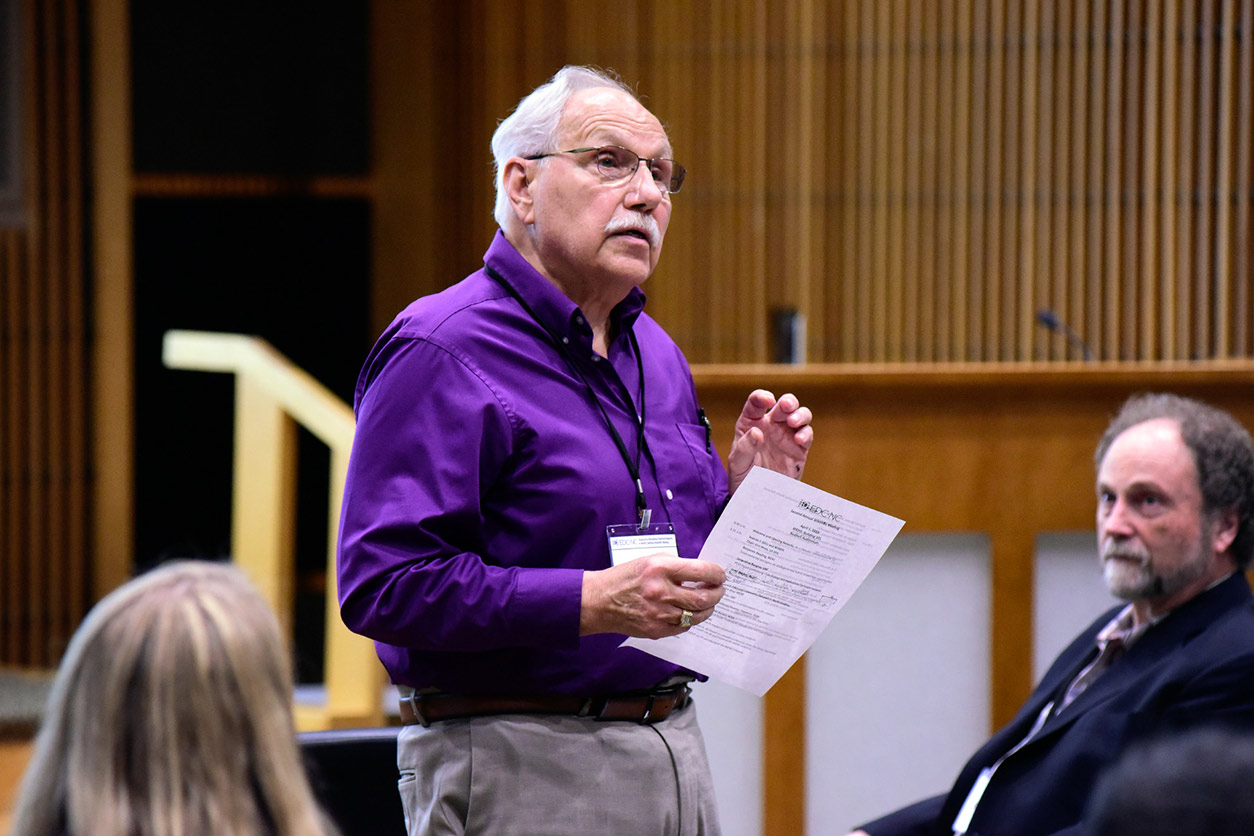 “Our mission is to create a local community of scientists and medical and public health professionals who support endocrine disruption research,” said Heindel. (Photo courtesy of Steve McCaw)
“Our mission is to create a local community of scientists and medical and public health professionals who support endocrine disruption research,” said Heindel. (Photo courtesy of Steve McCaw)The society hopes meetings like this will help members achieve its ambitious goals.
- Stimulate collaboration among scientists who study endocrine disruptors.
- Provide mentoring for new students and postdoctoral fellows.
- Engage in communication and outreach to a variety of audiences.
The meeting offered insights into how EDCs function in both humans and wildlife and highlighted ways to engage communities whose drinking water is contaminated by such chemicals or that are experiencing other effects.
Talks were complemented by a poster session during the lunch break (see sidebar). NIEHS and National Toxicology Program Director Linda Birnbaum, Ph.D., met with students over lunch to talk about career opportunities in environmental health.
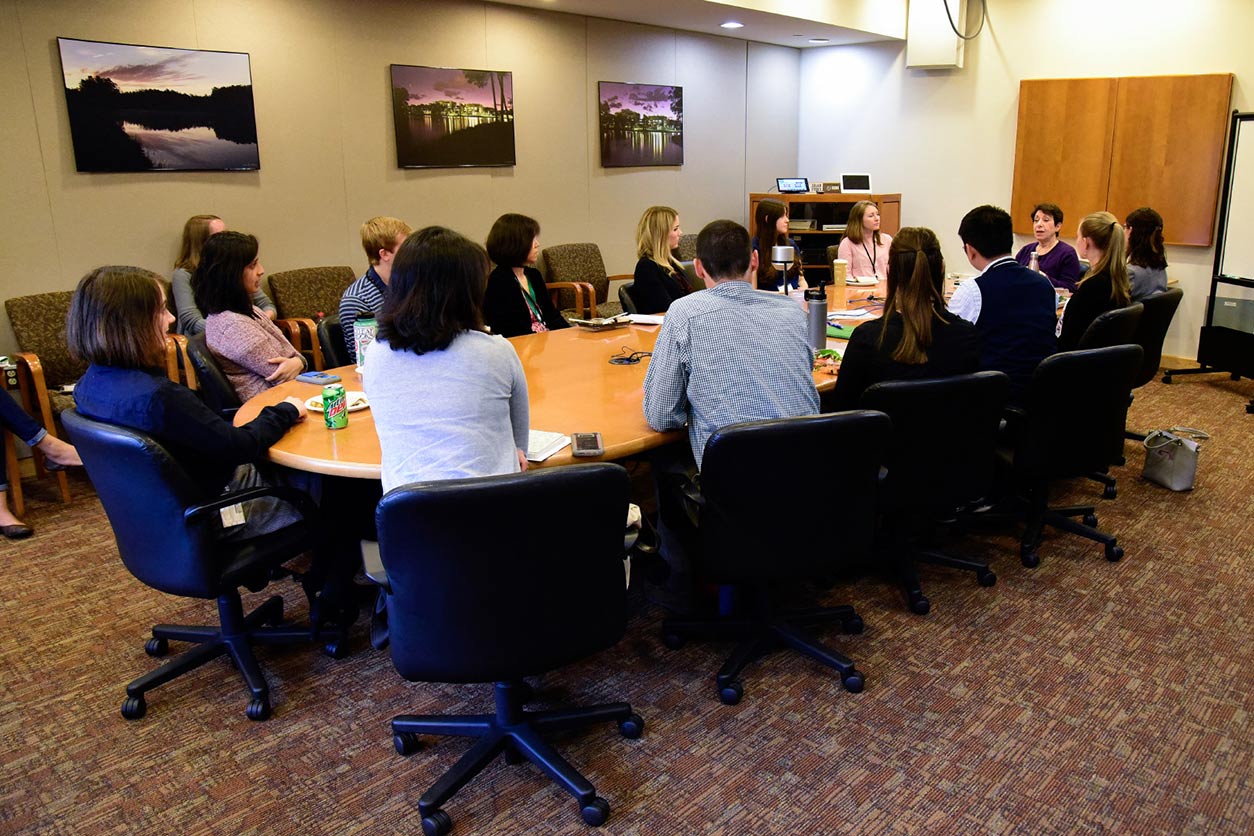 Birnbaum’s lunchtime career chat was a popular choice for trainees who attended the meeting. (Photo courtesy of Steve McCaw)
Birnbaum’s lunchtime career chat was a popular choice for trainees who attended the meeting. (Photo courtesy of Steve McCaw)Effects throughout the body
EDCs interfere with the function of hormones, which help develop and regulate systems vital to life, including reproduction, metabolism, growth, sleep, and stress response. Keynote speaker Nsedu Witherspoon, executive director of the Children’s Environmental Health Network in Washington, D.C., discussed current issues for children.
Heather Stapleton, Ph.D., from Duke University, presented a second keynote talk on how brominated flame retardants affect the placenta’s regulation of thyroid hormones.
Wildlife populations
Jacqueline Bangma, Ph.D., a postdoctoral fellow from the University of North Carolina at Chapel Hill (UNC) gave a talk on per- and polyfluoroalkyl substances (PFAS) in local fish populations.
Blood plasma, liver, and kidney showed the highest levels of PFAS in fish after exposure. Bangma and others are working to figure out why certain tissues accumulate PFAS more rapidly.
Involving the community
Speakers from NIEHS-funded Community Engagement Cores at UNC, Duke, and North Carolina State University (NCSU), which are part of the NIEHS Superfund Research Program and Partnerships for Environmental Public Health, shared a common theme of innovation that comes from bringing together unlikely partners, such as faith-based and fishing groups.
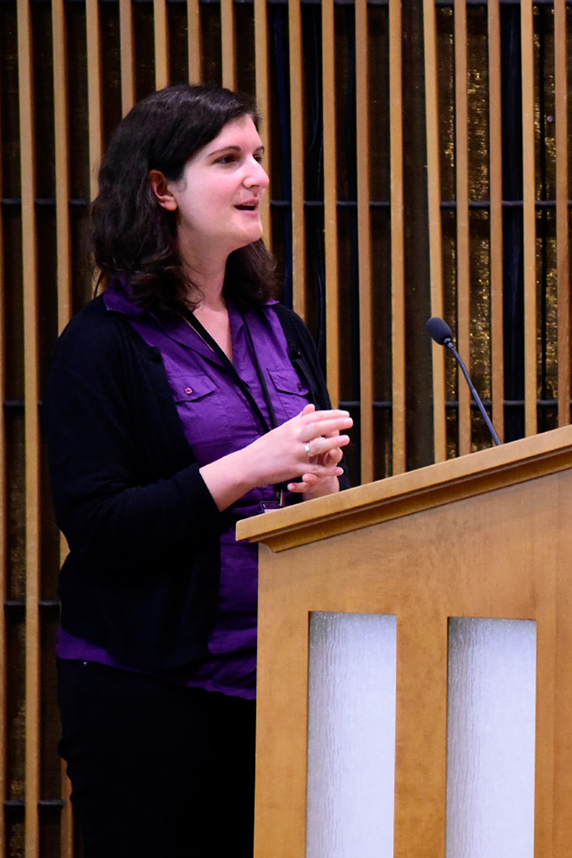 Kastleman explained Duke’s role in community-based participatory research during a session on involving local residents. (Photo courtesy of Steve McCaw)
Kastleman explained Duke’s role in community-based participatory research during a session on involving local residents. (Photo courtesy of Steve McCaw)“In our area, people often fish off of bridges. Do those people know that these waterways might be impaired by mercury or other EDCs?” asked Catherine Kastleman, from Duke. A practical solution developed by the Duke team is a calendar with recipes that suggest using fish with lower mercury levels. The team partnered with a local chef to develop recipes that offer alternatives to frying fish, to reduce exposure to certain contaminants.
“We want to provide potential solutions to communities to reduce or mitigate the impact of hazardous substances,” said Neasha Graves, from UNC. She described informing, consulting, involving, collaborating, and empowering individuals who may be affected by EDCs.
EDCs and epigenetics
Speakers in the final panel discussed EDC effects on epigenetic mechanisms, which are chemical tags that modify DNA and gene activity without changing the underlying genetic sequence. Biologist Yin Li, Ph.D., from the NIEHS Reproductive and Developmental Biology Lab, presented her research on epigenetic changes that follow exposure to diethylstilbesterol.
Bruce Blumberg, Ph.D., from the University of California, Irvine discussed effects of prenatal exposure to tributyltin, which is a toxic chemical used for industrial purposes and is often found in house dust. “Tributyltin is a known obesogen, or chemical that stimulates the development of fat cells — known as adipocytes — and fat storage,” said Blumberg. “About 50 chemical obesogens have been identified.” Blumberg showed that animals exposed to an obesogen in the womb gained more weight.
(Sheena Scruggs, Ph.D., is the Digital Outreach Coordinator in the NIEHS Office of Communications and Public Liaison.)





